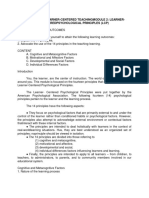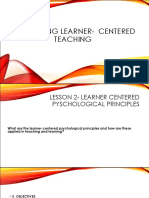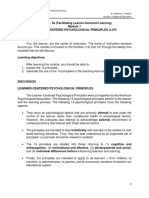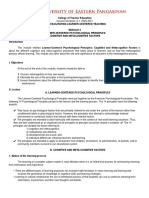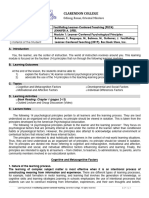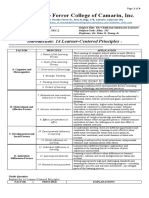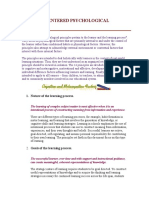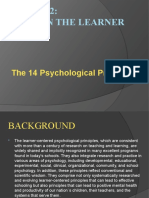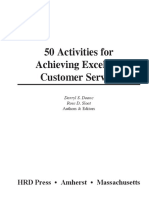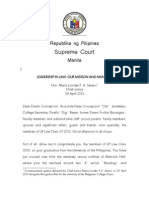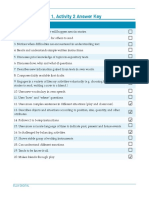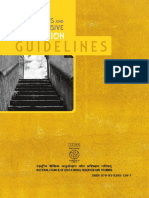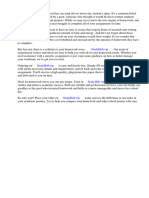0% found this document useful (0 votes)
20 views7 pagesFL Class Midterm
The document introduces learner-centered teaching, emphasizing the role of teachers as facilitators and the importance of engaging learners in the educational process. It outlines 14 psychological principles that focus on cognitive, motivational, developmental, social, and individual differences factors that influence learning. Additionally, it discusses various learning theories, including behaviorism, cognitivism, and constructivism, highlighting their interdependence and relevance in teaching practices.
Uploaded by
Nailyn PrusiaCopyright
© © All Rights Reserved
We take content rights seriously. If you suspect this is your content, claim it here.
Available Formats
Download as DOCX, PDF, TXT or read online on Scribd
0% found this document useful (0 votes)
20 views7 pagesFL Class Midterm
The document introduces learner-centered teaching, emphasizing the role of teachers as facilitators and the importance of engaging learners in the educational process. It outlines 14 psychological principles that focus on cognitive, motivational, developmental, social, and individual differences factors that influence learning. Additionally, it discusses various learning theories, including behaviorism, cognitivism, and constructivism, highlighting their interdependence and relevance in teaching practices.
Uploaded by
Nailyn PrusiaCopyright
© © All Rights Reserved
We take content rights seriously. If you suspect this is your content, claim it here.
Available Formats
Download as DOCX, PDF, TXT or read online on Scribd
/ 7
